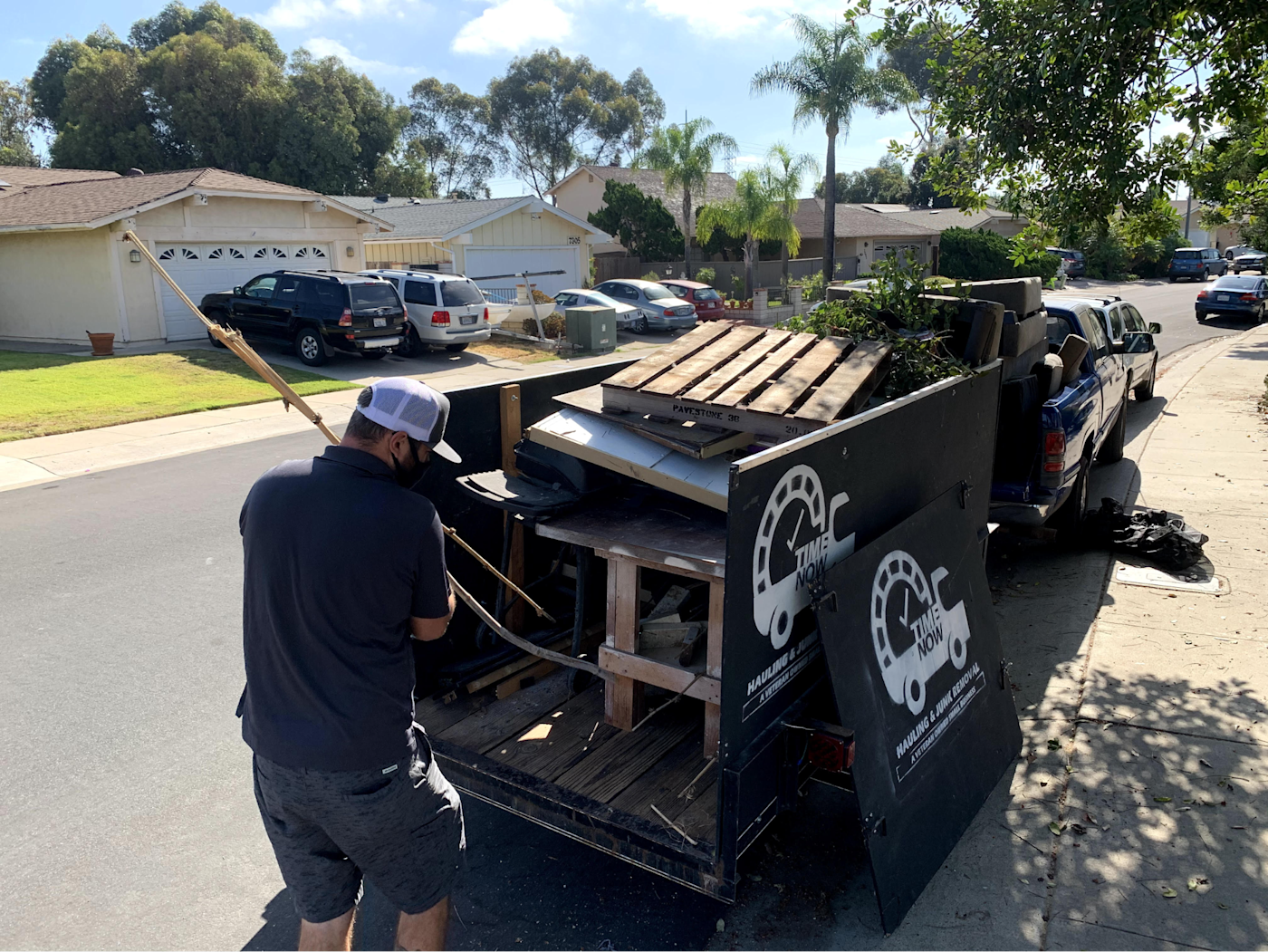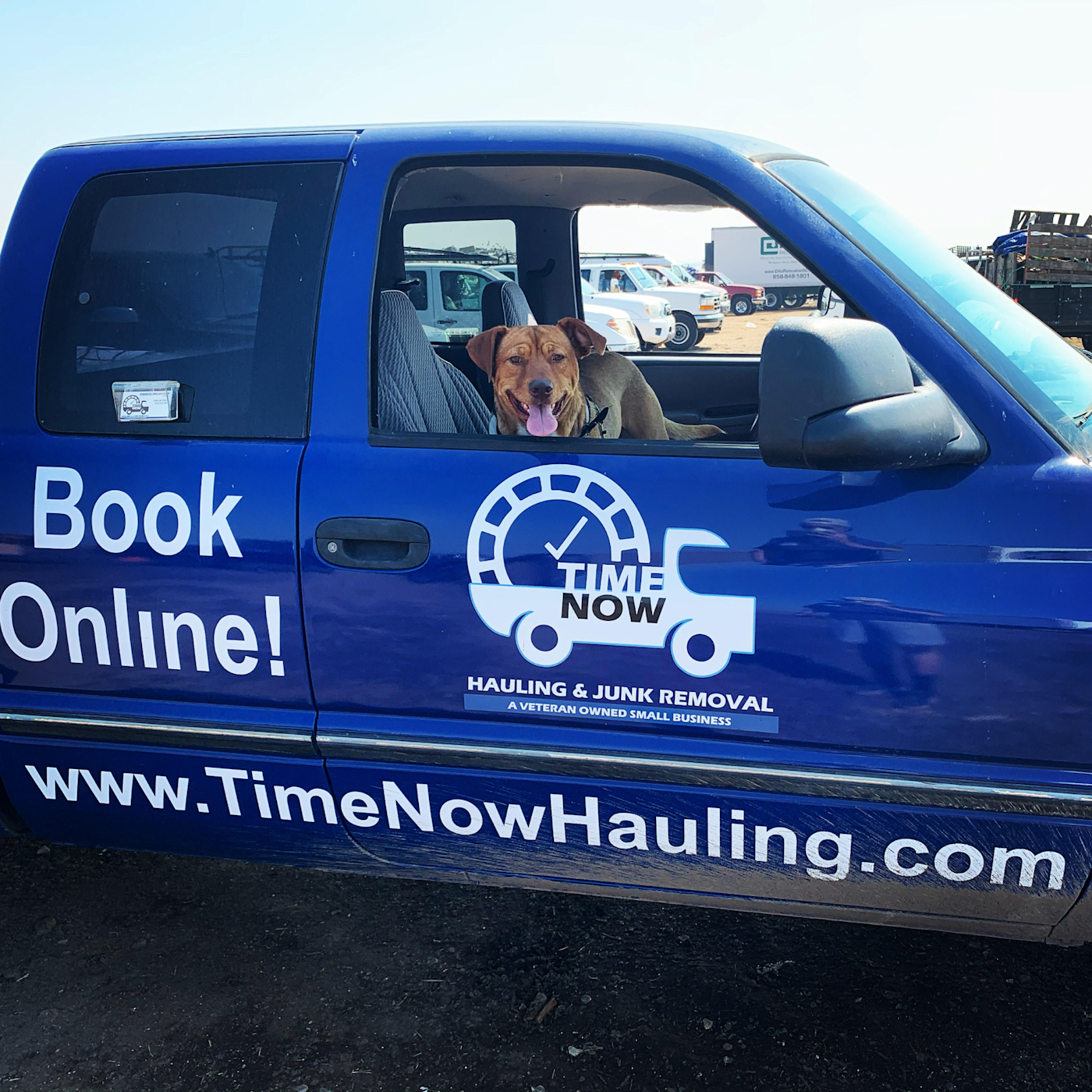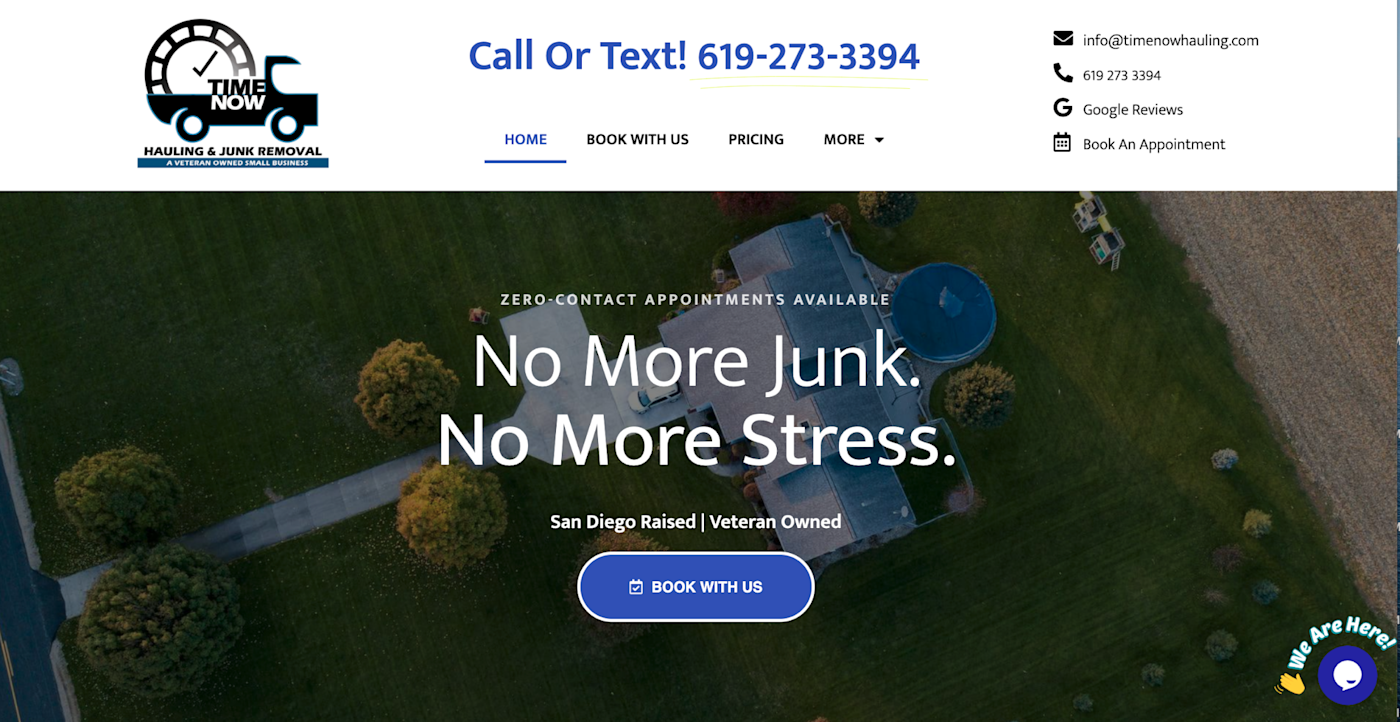Choosing to start a business in what seems like a crowded market can be daunting. How could your little startup possibly stand out against the businesses who've been around for several years?
My partner and I started our local hauling and junk removal business,Time Now Hauling, in June 2020, after some creative fundraising. Here in San Diego, there are at least three national junk removal franchises (1-800-GOT-JUNK, Junk King, and J-Dog), several other large-scale local companies, as well as countless unaffiliated haulers. Even in this crowded market, we've grown very quickly and established a loyal customer base in just six months.

We haven't reinvented the wheel, and we're not doing anything particularly unique. Instead, our success came from studying our competition, figuring out what they do well (and what they do poorly), and applying best practices to our own business. By learning from the mistakes of others, we set ourselves up to provide top-tier service even as we were booking our first customers.
As you scale your small business marketing, take a look at these 4 ways to use marketing automation to grow your business.
Conducting local market research
Before you invest a bunch of hard-earned cash into your dream business, you should have a firm idea of what your market looks like and where you're going to be positioned. Start by compiling a list of who is bigger than you, who might be your peer, and who would be smaller than you. Then gather some information about the other businesses.
You don't need to get lost in the details—just answer some basic questions:
How long has this business been around?
How many employees do they have?
How many locations do they have?
Are they national or strictly local?
How are they advertising?
How many customers do they get in a day, week, or month?
If selling a product, how do they manufacture? What are their manufacturing costs?
If selling a service, what kind of equipment do they have? What are the costs of acquisition and maintenance?
Getting exact answers to these questions is probably going to be impossible, but getting in the ballpark is good enough to start. If a market research survey is too much, I've even found that one of the best strategies was simply calling competitors and asking.
When we were still thinking about what business to start, my partner randomly met the guy who runs one of the local junk haul franchises. It was just a generic summer Tuesday, and the business owner said they had 17 junk hauls that day. Another company said on their busiest days, they'd get 50 phone calls. We called another few companies and figured out how busy they are on an average day, roughly how many employees they had, and a basic pricing structure. That was enough to get us going.
If you're not sure how to price your products or services, here are some tips from another small business owner on how to create a pricing structure for your new business.
Analyzing your competitors' offerings
Having a clear picture of your competition field is useful even if you don't do anything else. But to dig a little deeper, pick a couple businesses at each level (large/national chain and small/local only), and develop a better understanding of the services or products they offer.
Figuring out their core competency is key here. Now you'll start to answer the following questions (among others):
What is their main offering?
What do they charge for their main offering?
How quickly can they offer service?
What are their upsells to drive additional revenue?
What equipment is needed for their main offering vs. their upsells?
Are you capable of delivering a similar quality service/product?
What upsells can you emulate?
What can you offer that they can't?
You may want to start a cleaning company, but commercial and residential cleaners are going to have vastly different main offerings. Diving into what exactly each type of cleaning company does, why they do it, and how they do it will give you a detailed idea of where exactly you can fit in.
What you may find is that one or even a few companies are absolutely crushing it—but that doesn't mean you have no room to start. For example, as a consumer, you know that people in need of a service tend to go with whoever responds to them quickest. So if the big players in your area are booked up, you can offer same-day appointments and start to build your customer base that way. This is what I did, and it worked great.
In our local research, we also noticed that all the major junk haul companies have the same style of dump truck. These trucks cost about $40,000 used and are ultimately just a big empty space to put stuff in. So, not having $40,000 at our disposal, we bought a truck and trailer for about $7,000 total off Craigslist. It accomplishes the same task, and we've provided service that matches our high-bankroll competition since day one.
Identify competitors' advertising
Now you know your competitors pretty well. The next step is to determine where they're advertising, and to whom. That will help you figure out who your customer base may be and where you can stand out in the short term.
Where your small business can immediately make a splash is with small-scale, low-tech efforts to get the word out in your immediate area. You'll probably feel silly posting flyers on telephone poles in your area. I know I did. But our first $5,000 in revenue was driven almost exclusively by flyers and word-of-mouth referrals from customers who saw them. People really do care about supporting local businesses, and building a strong community presence will do wonders for your local reputation.
Starting small doesn't mean staying small. Here's a look at how small-scale marketing can help your growing business.
Another example: in San Diego, a year-long little league sponsorship with banners on two fields and advertising in the local newsletter costs $750. Those banners and prints represent hundreds of families seeing our company logo and phone number every week. While we've since started running Google and Facebook Ads with an allocated advertising budget, we never, ever would have gotten there without the smaller-scale marketing first.
Play the role of a customer
You want to get to know your competitors' customer experience. How do you do that? Become a customer.
If they have a physical location, visit it. See how it feels, what you like and dislike about it, and whether the staff are helpful or not. Take note of which companies are particularly easy to work with, and which companies are a bit of a headache. When you're building your customer service systems and practices, you'll easily be able to replicate the things you liked best and avoid the things that were painful.
For starters, I would bet half or less of your local service businesses actually answer the phone when called. Of those, leave a message and take note of who actually calls back. Do they sound courteous and professional, or do they answer with a grunt? Who is busy and who isn't? Could you get service today if you needed it? How far out are they booked? How easy is it to schedule an appointment? Book the free estimate or cheap service, and see if they show up on time and interact well.
It's easy for long-standing businesses to get complacent with customer service, especially if they feel like they dominate a market. This is one of the absolute best ways that a new business will stand out in a market with lots of competitors. If you read the Google reviews on my company, you'll notice that many of them focus on customer service. To get that level of service, we did exactly what I've described here: putting our competitors' best practices in place and making sure to avoid practices we found annoying.
Customer service isn't a one-time thing. Here's how to be sure you give your customers a consistent experience.
Read reviews of the competition
If you've gotten this far, you've probably already looked at your competitor's online profiles. If not, hop on Yelp or Google and get reviews. The five-star reviews will likely be similar, and you can gather what practices people loved, as well as common themes or even novelties to drive attention. Sort the reviews from worst to best, reading what customers who had bad experiences say. Often knowing what to avoid is even more important than knowing what to emulate.
Through looking at reviews, we found one junk removal company in a different market that brings homemade cookies to each appointment. It seems a little silly, but it becomes a powerful marketing tool as an easy conversation starter for that customer. They probably wouldn't be inclined to mention a regular junk removal appointment that went well, but the novelty of a junk company that brought over homemade cookies would be enough to make a remark to a neighbor. (We didn't copy this practice, but we remember it—that's for sure.)

Local website best practices
Go see who ranks on the first page of Google for your target keywords ("junk removal San Diego"), and check out their websites. How easy are they to navigate? How professional do they look? Is online booking/purchasing easy? Is pricing straightforward and obvious?
If your competitors' websites have identifiable weaknesses, it'll be much easier to appear on Google quickly. More likely, though, you'll find that they're pretty well built, so the more valuable practice here is picking the best part of each company's website and implementing it into your own site.

We borrowed almost all of our site's structure from our competition. Like everything else, we picked out what elements of different sites we liked best—and what we didn't like—and applied it to our site. We're not ranking on page one of Google yet (our site is still pretty new, and it takes a while to climb the rankings), but we do outperform several of our competitors.
A deep dive into local search engine optimization (SEO) is well beyond the scope of this article, but there are certain features every local business's website should have these days. Here's how to complete an SEO audit to help grow your business.
I realize that articles like this can cause analysis paralysis, but starting with what other people have already done and building on it is a great way to get your foot in the door. Someone, probably someone in your area, has already solved most of the problems you think you have as you start your business. Don't reinvent the wheel—just make it better.





